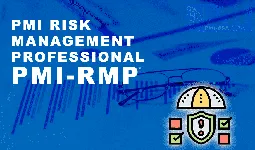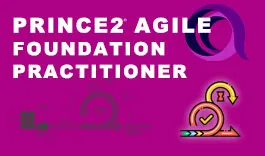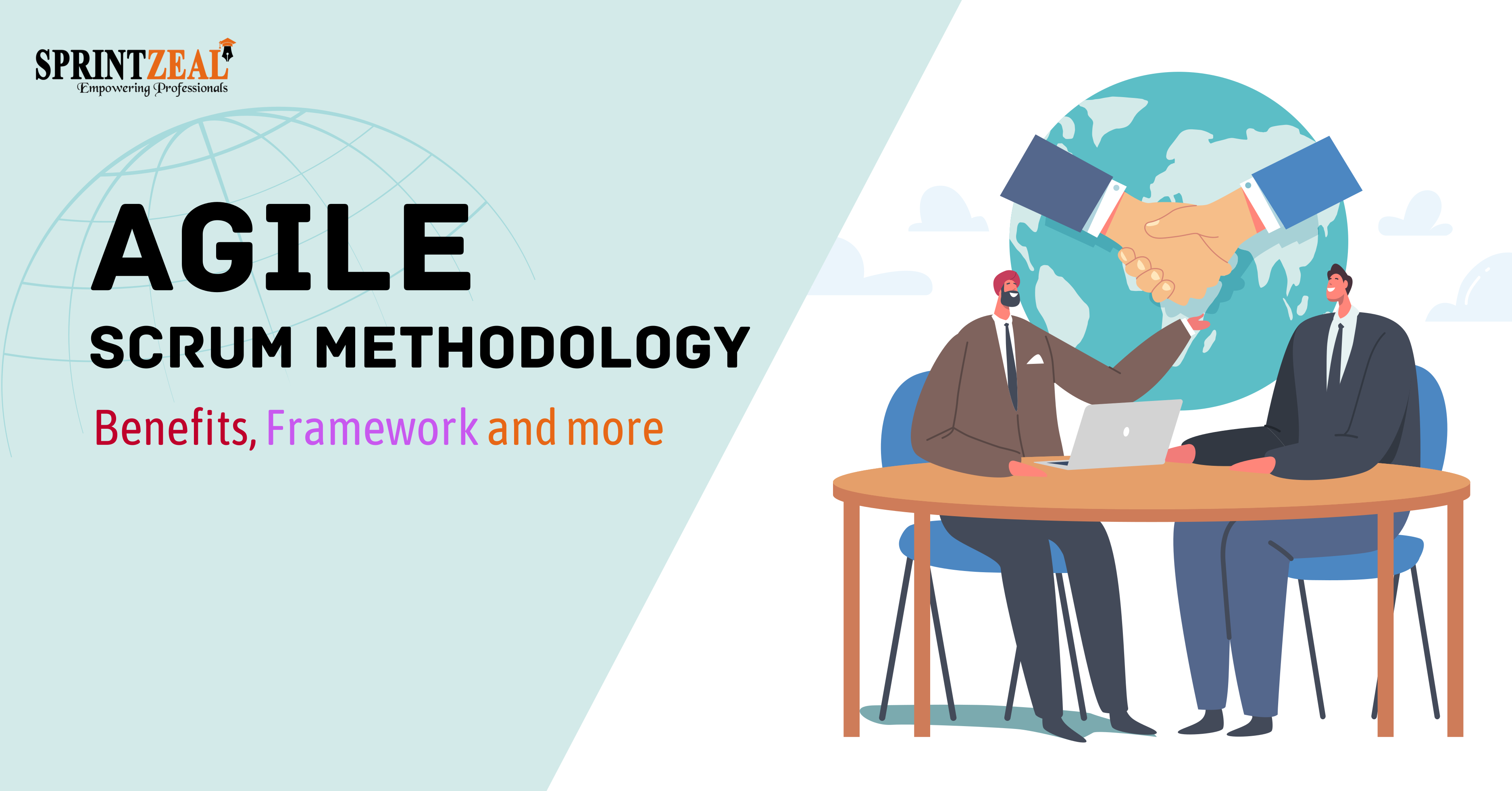Laravel Interview Questions and Answers for Successful Preparation
-
 By Sprintzeal
By Sprintzeal - Published on Nov 24 2025
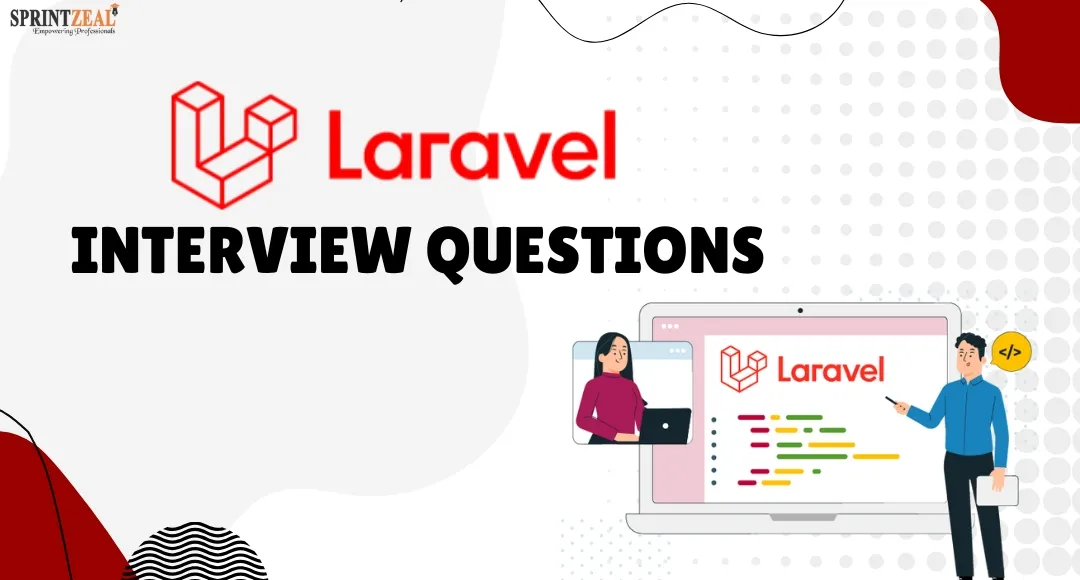
The first major part of the article will elaborate on a full range of essential interview questions and detailed explanations, covering the fundamental, intermediate, and advanced topics within the framework. Having a good command of these frequently asked technical questions is a must for any successful interview preparation and, consequently, will significantly increase your confidence when facing actual job interview questions. Here, the goal is to convert the theoretical knowledge into real, tangible examples. For a deeper dive into Laravel fundamentals and practical steps, check out this detailed resource: Laravel Developer Step-by-Step Guide.
It provides structured insights that complement these interview questions and strengthen your preparation journey.
First of all, we concentrate on basic architecture and the core principles before getting into the specific Laravel Interview Questions that differentiate candidates at different levels of experience.
Table of Contents
- Introduction to Laravel Interviews
- Essential Laravel Job Interview Questions for Entry-Level Candidates
- Intermediate Laravel Interview Questions on Core Concepts
- Advanced Laravel Interview Questions
- How to Prepare for a Laravel Technical Interview
- Conclusion
- FAQ’s on Laravel Interview Questions
Introduction to Laravel Interviews
When preparing for interviews for a Laravel developer position, there is definitely some preparation and you should put together a schedule for your studying. New features are coming into the ecosystem quickly. It is vital to know the features but also that you understand the core philosophy of the framework. This manual is intended to provide quality interview assistance and straightforward interview guides that will help you be more prepared. To be ready for this career stage is not only about recalling the syntax. It is more about showing skills in architectural design and problem-solving, which is a must for effective job interview preparation.
By honing in on the most relevant topics like MVC, Service Containers, Eloquent ORM, and Middleware. The candidate can ensure a strong hold of the concepts that serve as the building blocks for complex applications. These essential concepts are the groundwork of most Laravel Interview Questions located in the professional environment.
What Interviewers Expect in Laravel Roles
Hiring managers and technical leads look for candidates who go beyond just knowing the basics and have a deep understanding of best practices. Usually, the level of seniority of the role determines the hiring managers' expectations, but there is a certain baseline of common interview question knowledge that revolves around topics such as scalability, security, and maintainability. In the case of junior roles, interviewers mainly seek understanding of basics like routing and templating.
On the other hand, intermediate and senior candidates are exposed to more difficult questions that not only go beyond the usual interview questions but also require them to know system design patterns (e.g., Repository, Service layers) and performance optimization techniques (e.g., caching, queueing). At this phase of the hiring process, the candidate is given a chance to demonstrate how productive they are using Laravel tools to solve development needs in the real world.
Essential Laravel Job Interview Questions for Entry-Level Candidates
Usually, the interview questions of candidates or people who have no/less professional experience are based on the core concepts, architecture, and usage of the command line tool. Show that you know the basics like MVC, routing, and database operations, which will be enough to make a working example of the essentials.
1. What is Laravel and why is it popular?
Laravel is a PHP framework that is free and open source. It was a creation of Taylor Otwell and is mostly famous for its pretty syntax and the fact that it can be used for anything from small projects to big apps of enterprises.
Reasons for the popularity:
- The application scales well; with tools for routing, caching, sessions, and authentication, this is super useful.
- Clean code that is planned in such a way that it is simple for the developers to read, maintain and extend the functionality of the system.
- A great way of interacting with the database in a friendly manner without the need to write raw SQL queries.
- Besides the first-party packages (Cashier, Passport, Horizon) and a lively community.
2. What is the latest stable version of Laravel?
As of November 2025, the most recent stable release of Laravel is Laravel 12. Laravel majorly changes its versions about once a year. and thus, each version gets 18 months of bug fixes and 2 years of security fixes.
3. What is Composer and how is it used in Laravel?
Composer is the one who manages the dependencies for PHP. It manages the libraries and packages that your PHP project is built on.
Reasons for use and its role in Laravel:
- To install Laravel via Composer use the command:
composer create-project laravel/laravel project-name. - Composer will automatically fetch and download all latest packages defined in the composer.json for that project.
- A big part of the responsibility of a composer is to create a file in the vendor/ directory called autoload.php, which allows you to use classes from the framework or dependencies without doing the require statement on each of them individually.
4. Explain the MVC architecture in Laravel.
MVC (Model-View-Controller) is a system architecture that separates a program into three related sections, allowing greater completeness and modularity of the program.
- The Model is the portion of the overall architecture that contains the data and business logic of the application. In Laravel, Models are database objects and are usually the Eloquent ORM. The Model is also the layer that sets up relationships and enforces business logic.
- The View is the layer that shows the information to the user. Laravel employs the Blade templating engine for the views.
- The Controller is the part of the architecture that carries out the main mediation work. After getting the user's request, it invokes the suitable Model to get or change the data, and finally, it picks the View to be shown to the user along with the data it sends to the View object.
5. What is Artisan in Laravel?
Artisan is the command-line interface (CLI) that comes with Laravel. It offers a bundle of commands that can be used to automate repetitive development tasks, which, in effect, saves a developer a lot of time and effort.
Common Artisan Commands:
- php artisan serve: Launches a local development server.
- php artisan make:controller: Creates a new Controller file (generates code).
- php artisan migrate: Applies the migration files that have not yet been run.
- php artisan route:list: Prints out a detailed list of all the routes that have been registered.
- php artisan tinker: Is an interactive shell that lets you work with your application and Eloquent models directly from the command line.
6. How do environment variables work in Laravel?
Laravel uses environment variables to manage application settings that differ based on the environment (local development, testing, staging, or production).
- The root .env file is where all environment variables are defined. The .env file is excluded from version control (using .gitignore) because it contains sensitive information (database credentials, API keys, etc.) that varies for each deployment environment.
- The env() helper function is used in the application's configuration files (e.g., config/database.php) to retrieve the values (e.g., env('DB_DATABASE')).
To improve performance in production, we cache the .env contents in a PHP array, which is faster to access than having to read the .env file on every request, using php artisan config: cache.
7. What is routing in Laravel?
Routing is the process that determines what part of the code should handle a request to the given HTTP request (like a user going to a certain URL). In many cases, this will be a method on a Controller or closure. When using web applications, the routes are typically defined in a file called routes/web.php, and for stateless APIs, routes are defined in routes/api.php.
- Laravel defines a default way to use HTTP method verbs, with a function to correspond to each one. Route::get(), Route::post(), Route::put(), Route::patch(), and Route::delete().
- Resource Routes: Laravel makes it easy to define the standard seven CRUD operations for a resource with a single line of code: Route::resource('posts', PostController::class).
8. What templating engine does Laravel use?
Laravel leverages Blade as its templating engine.
- Syntax: Blade employs double curly brace syntax ($variable) for data output, and as a result, the data is escaped automatically to avoid XSS attacks. Control structures are written by using simple @ directives (e.g., @if, @foreach, @extends, @section).
- Zero Overhead: The compiled Blade views are in plain PHP code and are cached, so they practically add no overhead to the application at runtime.
- Template Inheritance: The main point of the template inheritance is its core feature whereby you can set up master layouts (using @yield or @section) that other views can simply extend (using @extends)
9. What are migrations in Laravel?
Migrations in Laravel are how Laravel keeps track of changes to your application’s database schema. With migrations, developers can specify database changes (creating tables, adding columns, dropping indexes) using clean, readable PHP code, rather than writing raw SQL.
To get the point across, migration files have two methods in each migration file:
- up(): Specifies the changes that need to be done (e.g., creating a table).
- down(): Shows how to convert the changes back (e.g., dropping the table).
It is like a version control system for the database schema. Thus, sharing and tracking the changes made by the development team becomes very easy.
10. What are seeders and factories?
Seeders and Factories are tools used for populating the database.
- Seeders: Are used to insert predefined, initial data into the database, such as administrator accounts, default settings, or category lists. They run using php artisan db:seed.
- Factories: Are used to generate large amounts of fake or "dummy" data for testing and development purposes. They use the Faker library to create realistic data (e.g., names, email addresses, dates) for your Eloquent models.
11. What is soft delete in Laravel?
Soft Delete is a feature in Laravel's Eloquent ORM that allows you to "delete" model records in a way that they are not actually removed from the database. Soft deletion, therefore, refrains from executing a destructive DELETE operation and simply keeps the record of the time in the deleted_at column in the table.
- Implementation: The model should incorporate the trait Illuminate\Database\Eloquent\SoftDeletes and the migration must have the deleted_at column.
- Performance: If soft delete is active, Eloquent queries will not take into account soft-deleted records by default. It is possible to bring them forcibly with the withTrashed() method and also, you can permanently delete them by using the forceDelete() method.
12. What are models in Laravel?
Models in Laravel represent PHP classes that represent your database tables and control the way to retrieve and change your data in your tracking application. They are part of the model layer of the MVC architecture.
Like many of the components in Laravel, Models, make use of the base Eloquent class and provide you the ability to define models, attributes, and relationships (one-to-one, one-to-many, etc.) and define your own accessors/mutators for processing data.
Database interactions happen through Eloquent, and within the world of Eloquent interactions, state in terms of User::all() and Post::find(1)->comments does not require raw SQL if you choose not to use it.
Intermediate Laravel Interview Questions on Core Concepts
13. What are Service Providers? Describe the register() and boot() methods.
Service Providers are the major means by which Laravel is bootstrapped with all its components, such as the service container, database connections, and routing. Essentially, they are the primary manner in which the framework gets loaded and configured.
- The register() Method:
This method serves to bind classes, interfaces, and services in the Service Container. Binding should be the only thing that you do here. You must not try to resolve other services or carry out resource-intensive operations, as it may be the case that not all providers have finished their registration yet.
- The boot() Method:
Once all the other service providers have registered and the framework is completely loaded, this method is executed. This is a good place to run code that interacts with other services, for example:
- Registering event listeners.
- Defining application routes (via loadRoutesFrom).
- Registering view composers or loading migration files.
14. What is the service container (IoC container) in Laravel?
The Laravel Service Container, also known as the Inversion of Control container, is a very effective instrument for the control of the class dependencies and the implementation of the dependency injection. The Container acts as a registry for services, handling the instantiation of classes and the provision of their dependencies.
- Function: The Service Container in Laravel allows the classes not to create their own dependencies, thus avoiding tight coupling and enabling more flexibility.
- Binding: You "show" the container the way to construct a class (for instance, binding an interface to a concrete implementation).
- Resolution: If a class is in need of another class, the container "resolves" it, that is, it goes ahead and constructs the required instance and injects it into the demander class. It also resolves the dependencies of the required instance, if there are any, automatically and recursively.
15. What is Dependency Injection?
Dependency Injection (DI) is a design pattern where the dependencies a class needs are given to it from outside, usually by a Service Container, instead of the class creating the dependencies by itself.
Type hinting: In Laravel, DI is usually automatically done for you when you type hint a dependency in the constructor or a method of a class. The Service Container identifies the type hint and provides the suitable instance.
This is good practice, as it results in loosely coupled code, which, in turn, makes the program easy to test (by simply injecting mocked or fake dependencies) and maintain.
16, What is middleware in Laravel?
Middleware is a set of tools that can be used to selectively block or allow HTTP requests coming into your app. They are a separate layer between the request and your app's logic (Controllers).
- Functional: Middleware may also review, alter, or deny a request if it is not meant for the route's target.
- Authentication: Checking whether the user has logged in.
- CSRF Protection: Confirming the token.
- Logging: Saving incoming request data.
- Format: Middleware involves a handle($request, Closure $next) method. The $next closure hands over the request to the subsequent layer in the app hierarchy.
17. How does Laravel protect against CSRF?
Laravel provides robust, built-in protection against Cross-Site Request Forgery (CSRF) attacks.
- Mechanism: Laravel automatically generates a unique, secret, and cryptographic token for each active user session.
- Verification: The VerifyCsrfToken middleware checks the token included in incoming requests (POST, PUT, PATCH, DELETE) against the token stored in the user's session. If they do not match, the request is rejected.
- Implementation: In Blade templates, the @csrf directive is used inside forms to insert a hidden input field containing the token:
@csrf {{-- Inserts: --}}
<!-- Form fields... →
18. Explain dependency and static method mocking using Facades in Laravel.
Laravel Facades provide a "static" interface to classes that are Service Container. They make it possible to write a simple, brief code (e.g., Cache::get()) that still keeps the DI advantages.
- Mocking:
Since Facades are resolved dynamically, Laravel gives you the possibility to "mock" them very easily in your tests. This facility allows you to replace the real implementation with a mock implementation to isolate the code under test. - Static Mocking:
The shouldReceive() method indicates that the Facade is to intercept a method invocation and return the requested value or to verify that a method was called a predetermined number of times.
use Illuminate\Support\Facades\Cache;
use PHPUnit\Framework\TestCase;
class MyTest extends TestCase {
public function test_cache_is_used() {
// Instruct the Cache Facade to expect the 'put' method to be called once
Cache::shouldReceive('put')
->once()
->with('report_key', \Mockery::any());
// Run the code that uses Cache::put()
$this->app->make(ReportService::class)->generateReport();
}
}
19. What is Eloquent ORM and its advantages?
Eloquent is Laravel's ORM (Object-Relational Mapper), which is highly capable and is included by default.
Function:
It connects tables in a database with PHP classes known as "Models" that represent the tables. Thus, you can work with the database in an object-oriented way.
Advantages:
- Expressive Syntax: Database interactions become very simple and readable (e.g., User::where('status', 'active')->first()).
- Code Maintainability: Helps separate database logic from application logic.
- Relationships: Creating relationships between tables is easy and intuitive by using this feature.
- Built-in Safety: Helps to some extent in protecting against simple SQL injection attacks.
Advanced Laravel Interview Questions
20. What types of relationships does Eloquent support?
Eloquent Relationship Types:
-
- One-to-One Relationship
Connects one model to a single related model (e.g., User → Profile). - One-to-Many Relationship
One record owns multiple related records (e.g., Post → Comments). - Many-to-Many Relationship
Models relate to each other through a pivot table (e.g., Users ↔ Roles). - HasManyThrough Relationship
Accesses distant relationships via an intermediate model (e.g., Country → Posts through Users).
- One-to-One Relationship
Polymorphic Relationships Types:
- One-to-One / One-to-Many Polymorphic: A model can belong to multiple model types (e.g., Photo → User/Product).
- Many-to-Many Polymorphic: A tag can be linked to various models (e.g., Tag ↔ Posts/Videos)
Why It Matters in Interviews
These relationships are among the most commonly asked Laravel interview questions because they reflect a developer’s ability to structure scalable, relational data in real-world applications.
21. What are accessors and mutators in Eloquent?
Accessors
- Accessors allow you to modify or format attribute values when retrieving them from the database.
- They are defined using the getAttributeNameAttribute() method.
- Example use cases: formatting dates, converting names to uppercase, appending custom values.
Mutators
- Mutators help you transform or clean data before saving it to the database.
- They use the setAttributeNameAttribute() method.
- Example use cases: hashing passwords, normalizing text, and trimming user input.
Why They Matter
- Accessors and mutators improve data consistency, readability, and model-level data handling.
- They are frequently highlighted in Laravel interview questions because they demonstrate a candidate’s understanding of how Eloquent manages data seamlessly at the model layer.
- Mutators to transform data before saving; accessors to transform data on retrieval.
22. How do you avoid the N+1 query problem?
What is the N+1 Problem?
It happens when an initial query triggers multiple additional queries for related data, causing performance issues.
Eager Loading (with())
Use with() to load related models in a single query, preventing repeated database hits.
Example: Post::with('comments')->get();
Lazy Eager Loading (load())
After retrieving the main collection, use load() to fetch relationships only when needed.
Example: $posts->load('comments');
Why It Matters
Avoiding N+1 improves performance and scalability.
It’s a common topic in Laravel interview questions because it shows understanding of efficient query handling.
23. How is validation handled in Laravel?
Request Validation
- Laravel allows quick validation using the validate() method directly inside controllers.
|
Example: $request->validate(['email' => 'required|email']); |
Form Request Classes
- For cleaner code, Laravel provides dedicated Form Request classes.
- They contain rules() and authorise() methods, making validation reusable and organised.
- Example: php artisan make:request StoreUserRequest.
Custom Validation Rules
- Developers can create custom rules using the Rule facade or custom rule classes.
- Useful for unique business logic like custom formats or domain checks.
Validation ensures data integrity and is frequently asked in Laravel interview questions due to its importance in secure application development.
24. How do you create custom Artisan commands?
Steps are as follows :
Generate the Command
- Use the Artisan command generator:
- php artisan make:command CustomCommand
- This creates a file in the app/Console/Commands directory.
Define Command Signature & Description
- Inside the command class, set the $signature and $description to define how the command is triggered in the terminal.
Write Logic in handle() Method
- Place the command’s actual execution logic inside the handle() method.
Register the Command
- Add the new command to app/Console/Kernel.php under the $commands array.
Custom Artisan commands automate tasks and are commonly asked in Laravel interview questions.
25. Explain the Repository design pattern in Laravel.
Purpose of the Pattern
- The Repository pattern helps separate data access logic from business logic, making the application cleaner and more maintainable.
How It Works
- You create a Repository Interface that defines the methods for data operations.
- Then, a Repository Class implements that interface and handles all Eloquent or database interactions.
Benefits
- Improves testability by allowing mock repositories during unit testing.
- Makes the application flexible by decoupling models from controllers and services.
- Enhances maintainability by keeping logic organized and reusable.
This concept appears frequently in Laravel interview questions because it shows understanding of scalable application architecture.
26. Explain the Singleton design pattern and its use in Laravel.
What is the Singleton Pattern?
- The Singleton design pattern ensures only one instance of a class exists throughout the entire application lifecycle.
- It provides a single, global access point to that instance.
How It Works in Laravel
- Laravel supports singletons through the Service Container using:
|
$this->app->singleton(ClassName::class, function () { |
This guarantees every time the class is resolved, the same instance is returned.
Benefits
- Reduces memory usage, avoids duplicate heavy objects, and keeps shared resources consistent
It appears frequently in Laravel interview questions because it shows knowledge of Laravel’s IoC container and application architecture.
27. What is event-driven programming in Laravel? Describe Events and Listeners.
- Event-driven programming allows actions to be triggered automatically when a specific event occurs.
- It helps decouple business logic, making applications cleaner and easier to maintain.
Events in Laravel
- Events represent something that has happened in the application (e.g., UserRegistered, OrderPlaced).
- They are created using:
|
php artisan make:event EventName. |
Listeners in Laravel
- Listeners respond to events and execute the required logic (e.g., sending emails, logging activity).
Created using:
|
php artisan make:listener ListenerName. |
Benefits
- Improves modularity, supports asynchronous workflows, and keeps code organized.
Understanding events and listeners is frequently tested in Laravel interview questions because it shows mastery of scalable, decoupled application architecture.
28. How do you handle caching in Laravel?
Caching Overview
- Laravel provides a powerful and unified caching system that boosts application performance by storing frequently accessed data temporarily.
- It supports multiple cache drivers, making it flexible for different environments.
Supported Cache Drivers
- File Cache: Default driver, stores cache in the filesystem.
- Database Cache: Stores cache records in a database table.
- Redis / Memcached: High-performance, memory-based caching options used in production.
- Choosing the right driver depends on scalability and speed needs—something often highlighted in Laravel interview questions.
Using Cache Methods
The most common method is Cache::remember(), which checks for cached data and stores it if missing:
|
Cache::remember('users', 60, function () { |
Supports TTL (Time-To-Live) to automatically expire cached data.
Cache Tags
- Laravel allows grouping related cache items using tags, which makes targeted invalidation easier.
|
Example: Cache::tags(['posts'])->put('recent', $data, 60); |
- Application-Level Caching
- Config caching: php artisan config:cache
- Route caching: php artisan route:cache
- These significantly improve application boot speed.
29. What Are Queues in Laravel & Why Are They Used?
Laravel queues provide a powerful mechanism to handle time-consuming tasks asynchronously, ensuring your application remains fast and responsive. They allow you to defer heavy processes such as sending emails, processing uploads, notifications, or API calls.
Key Points:
Definition of Queues
- Queues in Laravel help move long-running tasks to the background.
- They improve performance by offloading non-essential operations away from the main request lifecycle.
Why Queues Are Used
- Improves Response Time: User requests don’t wait for heavy processes.
- Enhances Scalability: Large applications handle more workload smoothly.
- Prevents Timeouts: Useful for tasks like bulk email sending or imports.
- Better User Experience: Faster page loads with background processing.
Queue Drivers
Laravel supports multiple queue drivers:
- Redis
- Database
- Beanstalkd
- Amazon SQS
- Sync (local development)
These are often discussed in laravel interview questions.
Job Dispatching
- Tasks are wrapped inside Jobs using php artisan make:job.
- Jobs are dispatched using dispatch() and pushed to the selected queue.
Queue Workers
- Workers continuously listen and process tasks:
php artisan queue: work - Supervisors are used for production to keep workers running.
30. What is Laravel Octane? When and why would you use it?
Laravel Octane is a high-performance package that boosts Laravel’s speed by running the application on powerful servers like Swoole or RoadRunner. It keeps the Laravel framework persisted in memory, which removes the overhead of booting the application on every request. This results in drastically faster response times and improved scalability. Topics like this are common in laravel interview questions, especially for performance-focused roles.
Key Points:
- High Performance:
Octane accelerates request handling by avoiding repeated initialisation and allowing concurrent task execution. - Persistent Application State:
Since the app stays in memory, Octane reduces boot time and increases throughput. - Supports Swoole & RoadRunner:
These servers offer coroutines, multi-threading, and advanced concurrency features. - Ideal Use Cases:
High-traffic APIs, real-time systems, chat apps, dashboards, and workloads where microseconds relate to performance. - Why Use It:
Faster processing, improved scalability, efficient handling of concurrent jobs, and better utilisation of system resources. - When Not to Use:
Smaller applications where boot time isn’t a bottleneck or apps that rely on shared state inside requests.
Overall, Laravel Octane is best suited for production systems requiring extreme performance, lower latency, and high request volume handling.
31. How do you handle database transactions in Laravel?
Handling database transactions in Laravel is essential for ensuring data consistency, especially in operations involving multiple queries. Laravel provides a clean and expressive way to manage this using the DB::transaction() method. This approach automatically commits the transaction if everything runs successfully or rolls it back if an exception occurs—an important concept often highlighted in laravel interview questions related to database integrity.
Key Points:
- Automatic Transactions with DB::transaction():
Wrapping critical logic inside DB::transaction(function () { ... }) ensures atomic operations and protects against partial updates. - Manual Transaction Control:
For more control, Laravel allows manually starting a transaction using DB::beginTransaction(), and then explicitly calling DB::commit() when successful or DB::rollback() if something fails. - Error Handling:
Exceptions inside a transaction automatically trigger a rollback, preventing corrupted or inconsistent data. - Use Cases:
Ideal for multi-step operations such as order placement, payment processing, inventory updates, and financial calculations. - Benefits:
Ensures data reliability, maintains system stability, and prevents “half-executed” operations.
Laravel’s transaction handling promotes safer database interactions, making it a best practice for building robust, fault-tolerant applications.
32. Explain service container bindings (singleton, bind, instance).
Laravel’s service container is a powerful dependency injection system that manages class resolution and object lifecycles. Understanding how to bind services is essential for writing clean, testable, and decoupled applications, and it’s a core topic frequently appearing in laravel interview questions.
Key Points:
- bind(): Transient Binding:
Using $app->bind() creates a new instance every time the class or interface is resolved. It’s ideal for lightweight services or scenarios where each request needs a fresh object. - singleton(): Single Instance Binding
$app->singleton() registers a binding that returns the same instance throughout the application’s lifecycle. This is useful for heavy objects, configuration services, API clients, or classes maintaining state. - instance(): Pre-built Object Binding
With $app->instance(), you can directly bind an already constructed object into the container. This is helpful when you need to inject objects created dynamically or loaded from external sources.
Mapping an interface to a concrete class ensures loose coupling:
|
$app->bind(LoggerInterface::class, FileLogger::class); |
Benefits:
- Promotes modular architecture, easier testing, better maintainability, and cleaner code separation.
33. How do you structure a large-scale Laravel application?
A large-scale Laravel application requires a modular, maintainable, and domain-driven structure to ensure scalability and long-term clarity. This topic appears frequently in laravel interview questions because it reflects an engineer’s ability to design enterprise-level architectures.
Key Points:
- Domain-Based (Modular) Organization
Splitting the application into domains like Users, Orders, Inventory, or Billing ensures cleaner boundaries. Each module may contain its own controllers, models, services, and repositories. - Service Layer for Business Logic
Creating a dedicated Services/ directory helps isolate business logic from controllers. This keeps controllers thin and improves testability. - Repository & Contract Pattern
Introducing Repositories/ for data operations and Contracts/ for interfaces decouples database logic from the business layer. This makes the application more flexible and easier to modify or test. - DTOs, Actions & Jobs
Using Data Transfer Objects, action classes, and queued jobs helps break down complex workflows into manageable, reusable units. - Clear Naming Conventions
Consistent naming for classes, folders, and interfaces promotes readability and reduces cognitive load in large teams. - Feature-Based Testing Structure
Organising tests per module ensures clarity and supports domain-driven development.
34. How do you set up CI/CD for a Laravel application?
Setting up CI/CD for a Laravel application ensures consistent testing, smooth deployments, and predictable releases. This topic often appears in laravel interview questions, especially for backend engineers working with APIs or microservices.
Key Points:
- Version Control Integration
CI/CD typically begins with GitHub Actions, GitLab CI, or Bitbucket Pipelines. Each push or pull request triggers automated workflows. - Running Automated Tests
Pipelines execute PHPUnit or Pest tests, check coding standards, and run static analysis tools to ensure code quality before merging. - Environment Handling
Secure secrets management is critical. Environments are stored using GitHub Secrets / GitLab Variables instead of committing .env files. During deployment, the CI pipeline generates or syncs environment variables. - Build & Optimization Steps
Pipelines handle Composer installs, caching dependencies, optimising autoloaders, building assets, and clearing or warming caches. - Database Migrations
As part of the CD phase, deployments run migrations safely—often with php artisan migrate --force to ensure schema consistency across services. - Deployment Tools
Platforms like Laravel Forge, Envoyer, Vapour, or Docker/Kubernetes automate server provisioning, zero-downtime deployments, and service orchestration. - Microservices & APIs
Each service gets its own pipeline, image build (if Dockerized), automated tests, and independent deployment flow to maintain loose coupling.
35. How do you build RESTful APIs in Laravel?
Building RESTful APIs in Laravel involves following a clean structure, standardized routing, and consistent JSON responses. This is a core topic frequently covered in laravel interview questions because it reflects real-world backend development skills.
Key Points:
- API Routing
REST endpoints are defined in routes/api.php, keeping them stateless and separated from web routes. Middleware like auth:sanctum or throttle ensures security and rate limits. - Dedicated API Controllers
Controllers placed under App\Http\Controllers\Api organize API logic clearly. Methods follow REST conventions like index, store, show, update, and destroy. - Request Validation
Form Request classes handle input validation, ensuring clean and secure data before it reaches controllers. This centralises rules and improves maintainability. - Eloquent + API Resources
Laravel Resources (Http\Resources) transform models into clean, structured JSON outputs. They hide unnecessary fields and maintain consistent formatting. - API Versioning
Structuring endpoints like /api/v1/users or /api/v2/users ensures backward compatibility as your API evolves. - Authentication & Tokens
Laravel Sanctum or Passport enables token-based authentication for mobile apps, single-page apps, and microservices. - Error Handling & Response Format
Consistent JSON responses—success, errors, pagination—improve client-side consumption and debugging.
36. How do you document Laravel APIs?
Proper API documentation is essential for seamless collaboration, onboarding, and integration with frontend, mobile, and third-party systems. This topic frequently appears in laravel interview questions because it demonstrates a developer’s ability to build maintainable and developer-friendly APIs.
Key Points:
- Scribe for Auto-Generated Documentation
Scribe automatically generates API docs from routes, annotations, and responses. It produces clean HTML and Markdown documentation, making it ideal for internal and external teams. - Swagger / OpenAPI Specification
Tools like Swagger-UI and OpenAPI 3.0 allow developers to create standardized, interactive documentation. Routes, parameters, security schemes, and responses can be described using YAML or annotations, enabling clients to test API endpoints directly. - Postman Collections
Exporting or maintaining a shared Postman collection helps teams test endpoints quickly. Collections can include sample payloads, authentication tokens, and environment-specific variables. - Annotation-Based Documentation
Using annotations in controller methods keeps the documentation close to the code, reducing mismatches between implementation and docs. - Consistent JSON Structures
Standard response shapes—success, errors, pagination—ensure documentation remains predictable and easy to follow. - Versioned Documentation
Supporting docs for /v1, /v2, etc., help maintain backward compatibility as APIs evolve.
37. How do you implement API authentication and rate limiting?
Implementing secure API authentication and rate limiting in Laravel ensures controlled access, protection against abuse, and a scalable API ecosystem. These concepts frequently appear in laravel interview questions because they demonstrate an engineer’s ability to design secure, production-ready services.
Key Points:
- Laravel Sanctum for Lightweight Token Auth
Sanctum offers simple, SPA-friendly, and mobile-friendly token authentication. It supports personal access tokens, abilities (scopes), and cookie-based session auth for single-page applications. - Laravel Passport for OAuth2
Passport provides a full OAuth2 server implementation, ideal for large applications, third-party integrations, and microservices requiring advanced token types like access tokens, refresh tokens, and clients. - Protecting Routes with Middleware
Securing API endpoints is straightforward using middleware such as:
|
Route::middleware('auth:sanctum')->get('/user', ...); |
- Rate Limiting with Throttle Middleware
Laravel’s built-in throttle: middleware limits the number of requests per minute to prevent abuse and brute-force attacks.
Custom rate limiters can be defined in RouteServiceProvider for user-based, IP-based, or role-based limits. - Per-User & Dynamic Limits
Rate limits can dynamically adjust based on user roles, API tiers, or subscription plans. - Consistent Error Responses
Standard 401, 403, and 429 responses improve client-side handling and API reliability.
38 How would you debug a slow query in Laravel?
Debugging slow queries in Laravel requires a combination of logging, profiling, and database optimization. This topic appears frequently in laravel interview questions because it reflects a developer’s ability to handle real-world performance issues.
Key Points:
- Query Logging for Inspection
Enabling DB::enableQueryLog() or using Laravel’s built-in ->toSql() method helps reveal the actual SQL being executed. This aids in identifying unnecessary or repeated queries. - Laravel Telescope
Telescope offers deep insight into executed queries, time taken, duplicates, and N+1 problems. It provides an interactive dashboard for real-time monitoring. - Laravel Debugbar
Debugbar displays queries directly in the browser, highlighting slow queries and their execution count. It’s ideal during local development. - Eager Loading Optimization
Many slow queries are caused by the N+1 problem. Using with() or load() ensures related data is fetched efficiently in fewer queries. - Database Indexing
Adding indexes to frequently filtered or sorted columns significantly improves performance. Tools like EXPLAIN help understand how the database processes queries. - Profiling with EXPLAIN
Running EXPLAIN on a query reveals table scans, missing indexes, or inefficient joins. - Caching Results
Caching repetitive queries using Cache::remember() reduces database load.
39. How do you optimise performance in Laravel applications?
Optimising a Laravel application involves improving execution speed, reducing bottlenecks, and ensuring efficient resource usage. This is a major topic in laravel interview questions, especially for developers building scalable, high-traffic systems.
Key Points:
- Configuration & Route Caching
Running php artisan config:cache and php artisan route:cache dramatically reduces boot time by loading pre-compiled configuration and route files. - Query Optimization
Minimizing database calls, using eager loading (with()), indexing tables, and caching heavy queries prevent slow responses and reduce DB load. - Application Caching
Leveraging Redis or Memcached for caching views, sessions, and computed data boosts performance. Using Cache::remember() avoids recalculating expensive operations. - Using Queues for Heavy Tasks
Email sending, report generation, and file processing should be offloaded to queues using Redis, database, or SQS drivers to keep requests fast. - Reducing Middleware Overhead
Removing unnecessary middleware or grouping routes more efficiently ensures lighter request pipelines. - Optimizing Composer & Autoloading
Using composer install --optimize-autoloader --no-dev reduces autoload time in production environments. - Using Laravel Octane
For high-performance needs, Octane boosts speed by keeping the application in memory using Swoole or RoadRunner. - Asset Optimization
Using Vite for minification, bundling, and caching improves frontend loading.
How to Prepare for a Laravel Technical Interview
Incredible technical interview preparation is a multi-faceted approach. One of the first things a candidate must do is make multiple passes through the official documentation and carefully study the HTTP layer, database interactions using Eloquent, and the Service Container core process. However, in a coding interview prep setting, practical execution has more to do with most of the success than theory.
Applicants should take every possible measure to implement user authentication, custom middleware, and complicated database relationships from the ground up, as this will help them achieve their goal in the most proficient manner. Such practical experience is the direct pathway to interview confidence and clarity. By concentrating on this comprehensive technical interview prep, you will be able to present the feature not only as 'what' it is but also 'how' and 'why' you utilize it within a scalable application architecture.
Conclusion
Laravel is a thriving and flexible PHP framework that is continuously changing in a manner that is satisfying to developers, as it is becoming more and more efficient, scalable, and elegant. Indeed, from the very intuitive routing and ORM to such uber-cool features of the framework as caching, queues, and Blade templating, Laravel has become the go-to framework of choice for solo devs as well as big teams carrying out both low and high scale projects. Grasping concepts such as dependency injection, service containers, authentication, and Laravel’s feature-rich toolset for database management is a must for anyone who wants to get to the bottom of this framework.
Thanks to its syntax that is full of expressiveness and its quite comprehensive set of features that come pre-bundled with the framework, Laravel goes a long way into simplifying the development process, which in turn makes it a very suitable tool for tackling challenges of modern web development. Notwithstanding, to genuinely exploit the power of Laravel, one needs to be properly acquainted with its sophisticated functions and observe the established norms of programming. It is at this point where imparting knowledge through a formal training session can be instrumental.
For web development, front- or back-end development, you can check out this course: Sprintzeal's Full Stack Developer Master Program
FAQ’s on Laravel Interview Questions
Q1. What are the most significant Laravel interview questions that I must prepare?
Core topics such as Eloquent ORM, routing, middleware, service container, REST APIs, authentication, and performance optimisation are usually what candidates focus on in order to have a confident interview session.
Q2. How can Laravel interview questions elevate my career?
Getting ready for these questions deepens the understanding of the backend by the candidate, makes him/her more confident, and thereby makes him/her more likely to get the positions of a Laravel Developer, Backend Engineer or Full-Stack Developer.
Q3. Can Laravel interview questions be helpful for beginners intending to transition into web development?
Indeed, they do. By working with these questions, beginners get acquainted with the application patterns, coding standards, and architectural thinking skills that a professional Laravel developer uses.
Q4. Do Laravel interview questions encompass trendy topics such as APIs, microservices, and cloud deployment?
Definitely. Most of the questions at the advanced level include topics like Sanctum, queues, Docker, CI/CD, microservices, and performance tuning for better industry alignment.
Q5. Is Laravel a proper career path and how do interview questions indicate its range?
Laravel is still very much in demand due to fast development, good community, and a solid ecosystem. The interview questions match the breadth of its scope—from simple CRUD apps to complex enterprise-level architecture.
Subscribe to our Newsletters
Popular Programs
PSM® - Professional Scrum Master Certification
Live Virtual Training
- 4.6 (75 + Ratings)
- 39k + Learners
Trending Posts
CSM vs CSPO: Which Certification is Right for You?
Last updated on Oct 28 2022
What is DevSecOps and its Importance
Last updated on Sep 6 2024
Agile Scrum Methodology - Benefits, Framework and Activities Explained
Last updated on Mar 25 2024
SAFe Certifications List - Best of 2024
Last updated on May 30 2023
Product Owner Certifications List
Last updated on May 22 2023
Scrum Ceremonies Guide
Last updated on Jun 6 2023
Categories
- Other 64
- Agile Management 61
- Cloud Computing 50
- Project Management 170
- Big Data 58
- Business Management 82
- Digital Marketing 73
- IT Service Management 29
- Programming Language 47
- AI and Machine Learning 67
- IT Security 108
- Quality Management 77
- IT Hardware and Networking 25
- Microsoft Program 4
- Workplace Skill Building 11
- Risk Management 9
- Information Security 8
- Leadership and Management 7
- Corporate Training and Development 1
Trending Now
List Of Traits An Effective Agile Scrum Master Must Possess
ArticleDevOps Vs Agile Differences Explained
ArticleDevops Tools Usage, and Benefits of Development Operations & VSTS
ArticleAgile Scrum Methodology - Benefits, Framework and Activities Explained
ArticleGuide to Agile Project Management 2024
Article10 best practices for effective DevOps in 2024
ArticleGuide to Becoming a Certified Scrum Master in 2024
ArticleWhy Should You Consider Getting a Scrum Master Certification?
ArticleCSM vs CSPO: Which Certification is Right for You?
ArticleAgile Manifesto - Principles, Values and Benefits
ArticleAgile Methodology Explained in Detail
ArticleAgile Project Management Explained
ArticleEverything about Scrum Methodology
ArticleLatest Agile Interview Questions and Answers To Look For In 2024
ArticleScrum Interview Questions and Answers 2024
ArticleTop Scrum Master Responsibilities 2024 (Updated)
ArticleDevOps Engineer Interview Questions - Best of 2024
ArticleDevOps Engineer - Career path, Job scope, and Certifications
ArticleScrum vs Safe – Differences Explained
ArticleCSM vs. PSM - Which Scrum Certification is Better?
ArticleSAFe Implementation Roadmap Guide
ArticleAgile Release Plan Guide
ArticleAgile Environment Guide
ArticleAgile Coaching Guide - Best Skills for Agile Coaches
ArticleAgile Principles Guide
ArticleSAFe Certifications List - Best of 2024
ArticleAgile Prioritization Techniques Explained
ArticleScrum Ceremonies Guide
ArticleProduct Owner Certifications List
ArticleScrum of Scrums Guide
ArticleBusiness Agility Guide - Importance, Benefits and Tips
ArticleWhat is DevSecOps and its Importance
ArticleStakeholder Engagement Levels Guide
ArticleScrum Master Career Path Explained
ArticleScrum Career Path Explained
ArticleDevOps Career Guide 2024
ArticleData Processing - A Beginner's Guide
ArticleScrum Workflow - A Step by Step Guide
ArticleTop Git Interview Questions and Answers [Updated 2024]
ArticleA guide to Agility in cloud computing
ebookProduct Roadmap: An Ultimate Guide to Successful Planning and Implementation
ArticleProduct Life Cycle in Marketing: Essential Strategies for Product’s Success
ArticleDMAIC Methodology - The Ultimate Guide
ArticleProduct Life Cycle Strategies: Key to Maximizing Product Efficiency
ArticleScrum Master Salary Trends in 2024
ArticleProduct Life Cycle Model: A Guide to Understanding Your Product's Success
ArticleWhat is a Product Owner - Role, Objectives and Importance Explained
ArticleSuccessful Product Strategies for Introduction Stage of Product Life Cycle
ArticleUnlocking Career Opportunities in Product Management: Your Roadmap to Success
ArticleSaturation Stage of Product Life Cycle: Complete Guide
ArticleEssential Tools for Agile Project Management 2024
ArticleHow to Write an Executive Summary for a Business Plan?
ArticleImportance of Procurement Management Software in Modern Business
ArticleBest Prompt Engineering Tools to Master AI Interaction and Content Generation
ArticleHow to Select a Rust Development Company with Expertise in Cloud and Embedded Systems?
ArticleMastering Your Sales Funnel to Maximize Every Conversion
ArticleMaster Node.js: Your Ultimate Interview Preparation Guide for 2026
ArticleTop Online Master's in Cybersecurity Programs for Working Professionals
ArticleFree Nano Banana Pro on ImagineArt: A Guide
ArticleVoice-of-the-Customer (VoC) - And How it can Build Your Career.
Article

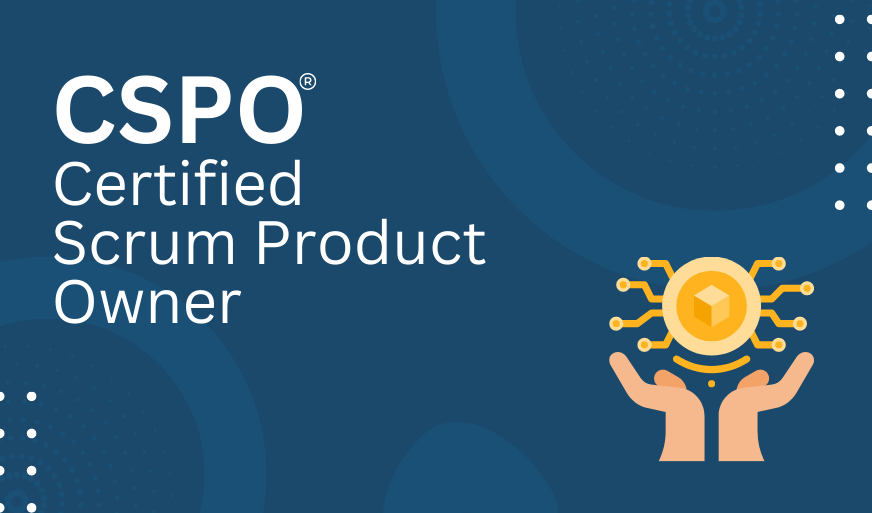
.webp)

